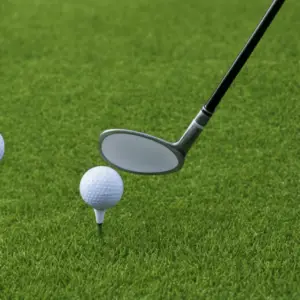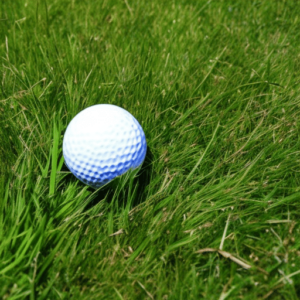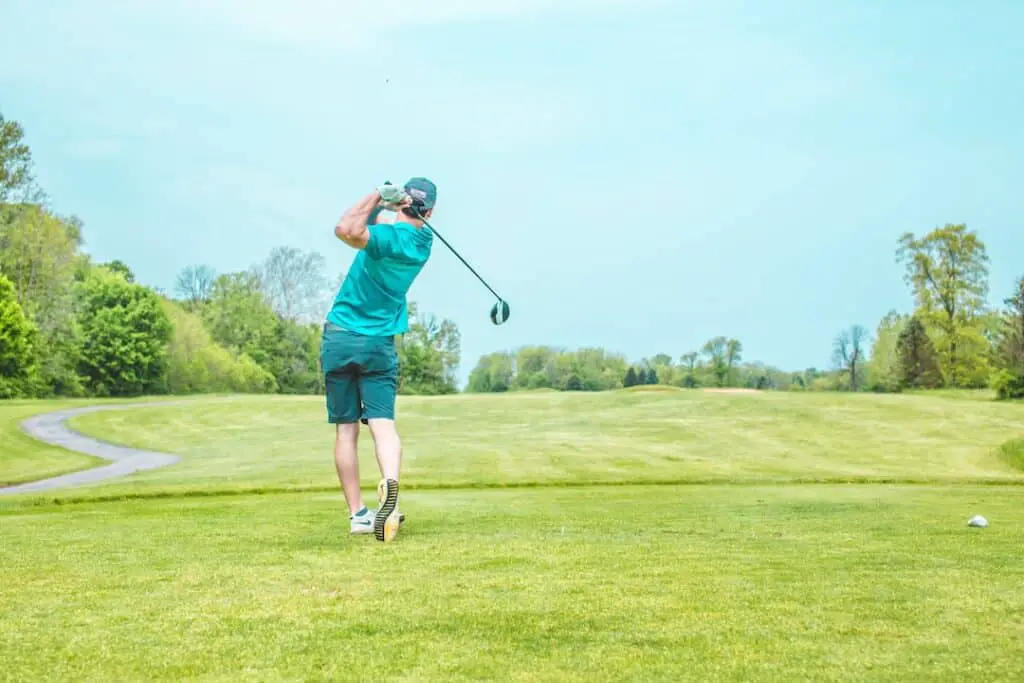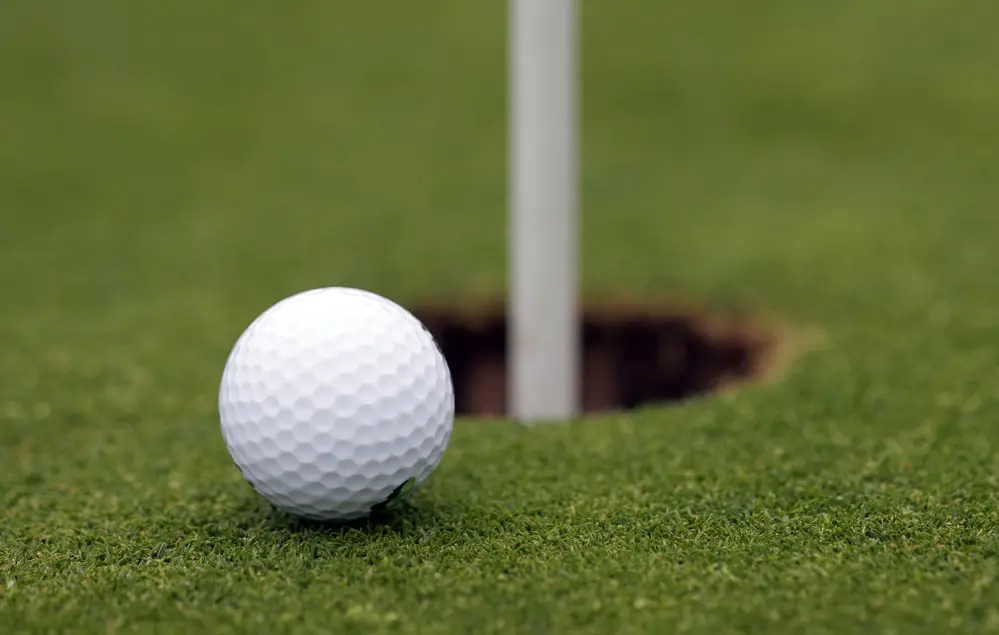Last Updated on June 6, 2023
Golf is a sport that requires skill and precision, but there’s also a physical side to it. Knowing which muscles golf works can help players make the most of their game.
From driving off the tee to putting on the green, golfers use many different parts of their bodies. It’s important to understand how these movements work your muscles so you can maximise your performance. From legs and core to arms and shoulders, no muscle group goes untouched when you hit the course.
Let me show you how each part of your body plays an important role in your swing mechanics and golf performance. With my guidance, you’ll be able to improve your game while strengthening those key muscles for better results on the links.
Impact on Posture and Balance
Golf requires a wide range of physical abilities, making it a demanding sport. One of the most important components of golf is posture and balance, which depend on core strength and flexibility. The core muscles are engaged throughout the entire swing to help keep the body stable and balanced. Golf also requires strong muscles in the arms, shoulders, back, hips, and legs to generate power throughout the swing. Additionally, hand-eye coordination is essential for a successful shot. The swing muscles used in golf include those found in the arms and shoulders as well as in the lower body during the backswing and follow-through. Putting also relies heavily on lower body muscles for stability and power. Finally, muscles in both arms are used for accurate putting distance control. All these muscle groups must be strong yet flexible enough to achieve peak performance on the golf course.
Core Strength Development

Golfing is a sport that relies heavily on core strength development. A strong core is essential for maintaining proper posture while golfing, as it helps to stabilise the body and keep the spine and joints aligned during the swing. Core strength can also help increase power output, giving you more control over your golf shots.
There are a number of exercises that can be used to develop core strength for golf. These include planks, sit-ups, crunches, leg raises, and bridges. Additionally, dynamic exercises such as medicine ball throws and lateral lunges are great for building the functional stability and strength needed for effective golf swings. It’s important to focus on form when doing these exercises in order to ensure you’re strengthening the right muscles for optimal performance. With consistent training, you should start to feel more confident in your ability to maintain good posture while making powerful shots on the course.
By focusing on core strength development through targeted exercises, you can make sure you have the stability and power needed to produce consistent results on the golf course. This will lead to improved performance and increased confidence in your game.
Flexibility for a Greater Range of Motion
Flexibility is crucial in golf; having great flexibility can lead to a greater range of motion and better control during the golf swing and putting. The chest, shoulders, arms, wrists, hands, hips, low back and legs must all be flexible enough to achieve the proper swing technique. Stretching these muscle groups helps to increase the range of motion needed for an efficient golf swing.
Dynamic stretching is beneficial before playing golf as it increases the body’s temperature and gets your muscles ready for action while also helping you to maintain flexibility throughout the round. This type of stretching includes activities such as arm circles, walking lunges and lateral shuffles that help to warm up the muscles and make them more pliable for a greater range of motion during your golf game. Incorporating dynamic stretches into your pre-round routine can help you make powerful swings with better accuracy.
Therefore, keeping your body loose and flexible is essential for any golfer who wants to improve their performance on the course. Regular stretching will reduce fatigue while increasing strength and power in your golf game.
Increase in Hand-Eye Coordination
Golfing is an excellent way to increase hand-eye coordination. The golf swing requires proper timing and accuracy, which can be improved through drills and a strong understanding of the fundamentals. When practising with a putter grip, for instance, players can focus on increasing their reaction time by adjusting their form and stance. Additionally, other golf drills, such as chipping and putting, can be used to hone in on the specific skill sets necessary for successful shots. By regularly engaging in these activities, players will increase their hand-eye coordination and further refine their game. Therefore, it is important that golfers take part in exercises that help build these skills so they can succeed on the course.
Muscles Used During the Swing

The golf swing is a complex movement that requires the coordination of many muscle groups. It is important to understand which muscles are used during the swing and how they interact with each other. The main muscle groups involved in a golf swing are the glutes, hamstrings, lats, abs, chest, and shoulders. These muscles work together to produce a powerful and accurate swing.
The glutes are responsible for initiating the backswing by driving the hips forward and rotating them to create torque in the body. During follow-through, these same muscles help decelerate the rotation of the hips as well as add power to your shot. The hamstrings provide stability to maintain balance throughout the motion and control knee flexion during the backswing. The lats control shoulder extension during backswing and shoulder rotation during the follow-through. The abs help stabilise the torso while actively creating separation between the upper and lower body throughout both the backswing and follow-through phases. The chest muscles work in conjunction with the lats to generate power during the follow-through. Finally, the shoulder muscles assist in generating power through shoulder adduction on the downswing as well as controlling club head speed on follow-through by decelerating shoulder movement at the impact zone.
Golf is an excellent way to challenge all these muscle groups while providing an enjoyable activity that can be shared with friends or family. Through proper instruction and practice, golfers can develop their skills while strengthening their bodies at the same time!
Muscles Used During Putting
Putting is an important part of the golf game, and the muscles used to execute this shot need to be strong and flexible. The major muscle groups involved in putting are the core muscles, the arm muscles, and the shoulder muscles. The core muscles help stabilise your body during the stroke, while the arm and shoulder muscles provide power to propel the ball forward.
The main muscle groups used during putting include abdominals, obliques, rectus abdominis, latissimus dorsi, triceps, biceps, deltoids, pectorals, trapezius and serratus anterior. These muscle groups help you maintain a steady posture throughout your swing by providing stability and balance. Additionally, these same muscle groups provide power to your arms for increased distance on your putts.
It’s important for golfers to strengthen their putting muscles through regular exercise so that they can hit consistent shots with confidence. Strengthening exercises such as planks, sit-ups, and push-ups will help build these essential muscle groups for putting success. With stronger core muscles and improved flexibility in your arms and shoulders, you’ll be able to generate more power while still maintaining control over your putts.
Frequently Asked Questions
What Are the Potential Health Benefits of Golf?

Golf is a game that offers players the opportunity to reap numerous physical benefits. From improved strength and flexibility to greater balance and endurance, golf provides many advantages for golfers looking to improve their overall health. I have seen firsthand how much of an impact this sport can have on an individual’s physical well-being.
When it comes to strength, playing golf can help strengthen the muscles in your arms, shoulders, back and legs. Through regular practice and play, those muscles become stronger over time, allowing you to hit longer drives with more accuracy. Additionally, due to the constant twisting motion of the swing, golf also helps to improve flexibility as well as balance. Improved balance helps golfers better control their club during each shot, which leads to better performance on the course.
In addition to strength and flexibility benefits, playing golf can also help improve cardiovascular endurance. The aerobic activity of walking the course, combined with short bursts of sprinting between shots, can help get your heart rate up and keep it there for extended periods of time – providing a great cardio workout. This combination of aerobic and anaerobic exercise helps strengthen your heart muscle while boosting your overall endurance levels at the same time.
With all these benefits working together in tandem, it’s no wonder why so many people are drawn towards this sport. By engaging in regular practice sessions and rounds out on the links, you’ll be able to take advantage of all these potential health benefits that come along with playing golf – making it easier than ever before for you to stay fit and healthy while enjoying yourself at the same time!
How Much Time Should I Spend Practising Golf Each Week?
Golf practice is an important part of developing a successful game. Knowing how much time to spend practising each week can be a challenging task. It is important to understand the amount and frequency of your golf practice sessions in order to get the most out of them. I recommend that golfers take into consideration their golf practice time, duration, frequency, amount, and intervals when deciding on a weekly practice schedule.
When it comes to the amount of time spent practising each week, many factors should be taken into account. Depending on skill level and playing goals, some golfers may need more time than others. For example, someone who is just beginning may need more regular practice sessions than a more experienced golfer; while someone with competitive aspirations may require more hours of dedicated practice each week. Additionally, those who play for fitness and fun can still benefit from regularly scheduled practice sessions. The key is to find the balance between enjoying the game and pushing yourself further towards improvement.
Golfing isn’t always about improving one’s handicap or winning tournaments – it’s about having fun! That being said, it’s important to set realistic expectations for yourself regarding golf practice duration and frequency, so you don’t burn out or become frustrated with your progress too quickly. Establishing a routine can help ensure that you are making consistent progress without neglecting other activities or responsibilities in life. Whether it’s playing nine holes every other day or hitting balls at the range once a week, setting aside some dedicated time each week can go a long way in helping you reach your goals on the links!
Conclusion
Golf is a great way to stay active and improve your overall health. It works for multiple muscle groups and can help you build strength, endurance, and flexibility. The right clothing will keep you comfortable while playing, so make sure you wear layers that are breathable and allow for movement. How much practice time you should dedicate each week depends on your skill level; beginners will benefit from spending more time on the range, while experienced players could get away with just a few hours. Having the right clubs for your size and skill level is essential for improving your score. With dedication and smart practice, anyone can become a better golfer.



